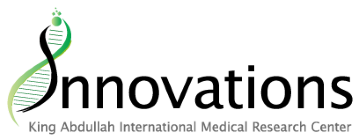
A recent study shows the incidence of inborn errors of metabolism in Saudi Arabia to be 1 in 635 children, well above international rates.BRAND X
Saudi Arabia has one of the highest rates of inherited metabolic disorders in the world, according to a 13-year review of children diagnosed at one of the largest hospitals in the country. This grave finding, the study authors say, points to the need for urgent and coordinated action to reduce the number of people suffering from so-called inborn errors of metabolism (IEMs).
“The incredibly high rate of IEMs in Saudi Arabia compels the healthcare administration in the country to develop a long-term strategic plan for the prevention of such disorders,” says KAIMRC paediatric geneticist, Majid Alfadhel, who led the research.
IEMs are rare genetic disorders caused by mutations that impair the ability of different enzymes to break down parts of food into energy. Collectively, the incidence of all IEMs is generally less than 1 in 2,500 throughout much of the Western world. But in countries where marriages between cousins are common, such as Saudi Arabia, the incidence is often much higher.
One 25-year study from a hospital in Dahran, in the Eastern Province of the Kingdom, documented an incidence of about 1 in 667 . Apart from that study, however, publications in the Saudi literature have been limited to case reports and case series.
This piecemeal reporting led Alfadhel to wonder whether the numbers from Dahran were representative of the country as a whole.
He and colleagues from King Abdulaziz Medical City in Riyadh looked at their records. Between 2001 and 2014, a total of 110,601 children were born at the hospital complex, 187 of whom were diagnosed with an IEM. That translated to an incidence rate of 1 in 591; on par with what researchers had found previously in Dahran. Combining the results of the two studies yielded an incidence rate of 1 in 635, one of the highest ever documented in the world.
Alfadhel’s team classified the 187 patients by their type of disorder. This should help doctors know what to look for, so they can intervene with medicines when appropriate. The authors also chronicled 43 mutations never seen before by scientists, observations that could aid in future diagnoses.
Based on his findings, Alfadhel has a number of recommendations for healthcare administrators in Saudi Arabia. These include a national registry to determine the most common disorders and mutations, public health educational campaigns, and genetic screening among high school students so that, when they marry and have children, they can make informed decisions about family planning.


